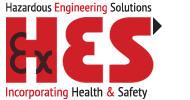Whether you're handling flammable gases, combustible dusts, or unstable chemicals, the risk of explosive atmospheres must be managed proactively, not reactively. In the UK, the Dangerous Substances and Explosive Atmospheres Regulations (DSEAR) legally require employers to assess and mitigate these risks. DSEAR enacts the European ATEX and Chemical Agents Directives (CAD) into UK law, and while DSEAR was derived from EU legislation, it now stands independently post-Brexit.
The UK Health and Safety Executive's Approved Code of Practice (ACoP) L138 provides authoritative guidance on when, why, and how often DSEAR reviews must be conducted.
So, when should you act, and how do you ensure your ATEX/DSEAR assessment protects your people, plant, and profits? Your ATEX/DSEAR assessment is not just a report — it's your foundation for safe, legal, and efficient operations. As your processes evolve, so must your understanding of the hazards they pose.
Strategic and Operational Drivers for Conducting ATEX/DSEAR Assessments
Conducting a DSEAR/ATEX assessment is far more than a tick-box exercise — it's a critical component of operational safety, legal compliance, and business continuity. Key drivers include:
- Regulatory Compliance – DSEAR is a legal obligation under UK law.
- Safe Operation of Facilities – Identifies and mitigates fire, explosion, and energetic risks.
- Insurance & Liability Management – Demonstrates duty of care and can influence policy premiums.
- Training & Awareness – Supports ongoing education for personnel about hazardous areas.
- Integration with Process Safety – Complements frameworks such as Process Safety Management (PSM) and Process Hazard Analysis (PHA) for robust risk management.
- ESG & Governance Alignment – Shows commitment to high safety and environmental standards.
Failure to comply with DSEAR can result in enforcement actions, heavy fines, or prosecution under the Health and Safety at Work Act 1974.
Common Pitfalls in ATEX/DSEAR Reviews: What We Frequently Uncover
Risk assessments often capture a snapshot in time. Critical hazards can be missed without the right depth and expertise, potentially with catastrophic consequences.
Electrostatic Hazards – Frequently Overlooked Risks
Insufficient understanding of material conductivity, flexible hosing, insulating Personal Protective Equipment (PPE), or worn earthing systems can create inadvertent ignition sources.
Dust Hazards – The Silent Threat
Combustible powders can form explosive dust clouds under specific conditions. Many facilities underestimate the explosiveness of seemingly benign materials.
Non-Routine Operations – The Hidden Danger
Start-up, shutdown, cleaning, and regeneration cycles often fall outside standard assessments — yet they pose some of the highest risks.
Waste Systems – The Forgotten Fire Source
Poorly understood or unmanaged waste handling and disposal can introduce flammable atmospheres or reactive by-products.
Our expert reviews often reveal overlooked ignition sources, misclassified zones, or equipment mismatches that standard assessments miss.
Safety Systems – Reliance on unverified Safety Systems
In process safety, many systems require SIL (Safety Integrity Levels) verification, also usually requires ‘proof testing’ of the systems. Such systems may include ventilation failure alarms, temperature monitoring, fuels valves that close automatically on leak or fire detection and process failure alarms.
When to Review Your DSEAR Assessment: Aligning with Change and Risk
Reviews must be conducted at appropriate intervals, not just when "something seems wrong." The HSE's L138 guidance is clear: reassess when there is any significant change or on a routine, risk-based schedule.
Recommended Review Intervals
Risk Profile
High-risk site
Medium to low-risk site
After a significant change
Review Frequency
Every 1–2 years
Every 3–5 years
Immediately
Reviews can take the form of ‘audits (gap analysis) or, in some cases. Management Reviews as long as DSEAR/ATEX experts feed into the reviews.
What Counts as a "Significant Change"?
- New processes, materials, or equipment introduced
- Changes in material data (e.g. new supplier or altered particle size)
- Changes in quantities of flammables used or stored.
- Degradation of safety-critical equipment (EN60079-14 and SIL)
- Adjustments in SOPs, batch sizes, and process parameters
- Layout or ventilation changes (area classification)
- Updates to storage or handling methods
- Changes in number of people (consequences)
Pro Tip: Integrate DSEAR reviews into your Management of Change (MOC) policies. ExVeritas offers expert support in embedding DSEAR into MOC frameworks.
Why Regular DSEAR Reviews Matter
Routine assessments do more than tick compliance boxes — they proactively improve your safety posture and operational efficiency:
- Optimise Zoning – Prevent costly over-zoning by validating real risk profiles.
- Confirm the Basis of Safety – Ensure effective ignition sources are controlled, and explosion protection systems are correctly rated for new materials.
- Identify New Ignition Sources – Catch emerging hazards from changes in equipment use, safety systems, procedures, wear-and-tear or maintenance changes, etc.
- Strengthen Procedures – Align systems of work with current plant realities (e.g. ventilation, leak detection, continuity to earth, etc.)
-
- Continuous Improvement – Feed findings into broader risk management and functional safety strategies.
Routine checks consider issues that will not be considered in typical 60079-14/17 Inspections (such as CompEx, which tend to focus on ‘equipment’). A schedule should be made for other necessary inspections, such as ventilation effectiveness and removal of empty flammable storage containers.
Pro Tip: Factors that affect Area Classification will have the greatest impact on overall safety. Preventing (with maintenance) and detecting leaks or housekeeping (for dust) should be considered regularly.
It is imperative that there is a management system in place that monitors significant factors that affect explosion safety. Equipment inspections will be part of this but are not sufficient on their own, and systems must be put in place to both identify and monitor less obvious aspects relating to the flammable material and containment such as separation, segregation and ventilation
ExVeritas help organisations proactively manage fire and explosion risks through specialist ATEX and DSEAR assessments.
As UKAS-accredited and EU ATEX Notified Bodies, ExVeritas combines technical depth with regulatory precision. We provide more than compliance — we deliver confidence.
www.exveritas.com for a free initial consultation.
Artile written By Chirag Sheth CEng MIChemE,
|
ExVeritas Senior DSEAR and Process Safety Consultant
|











